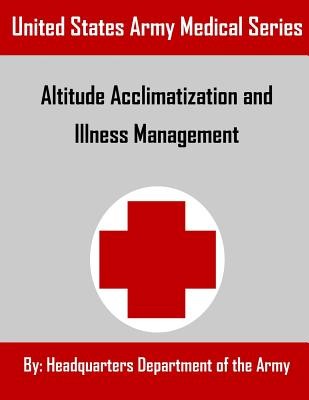
- We will send in 10–14 business days.
- Author: Headquarters Department of the Army
- Publisher: CreateSpace Independent Publishing Platform
- ISBN-10: 1534679294
- ISBN-13: 9781534679290
- Format: 21.6 x 28 x 0.6 cm, minkšti viršeliai
- Language: English
- SAVE -10% with code: EXTRA
Altitude Acclimatization and Illness Management (e-book) (used book) | bookbook.eu
Reviews
Description
The subject matter of this bulletin is hypobaric hypoxia, an environmental stress resulting from ascent to progressively higher terrestrial elevation or altitude. This bulletin defines the threshold altitude at which hypobaric hypoxia becomes functionally and medically significant at 1,200 meters (m) (3,937 feet (ft)) above sea level. Throughout this bulletin, the terms altitude, elevation, hypobaric hypoxia, or hypoxia are considered interchangeable. This bulletin provides guidance to military and civilian health care providers, allied medical personnel, unit commanders and leaders to- a. Develop an evidence-based prevention program to protect military personnel from altitude stress and associated adverse health effects. b. Understand the physiologic responses and adaptations to altitude (chapter 2). c. Implement procedures for managing altitude stress (chapter 3). d. Understand the principles and proper use of altitude acclimatization tables (chapter 3). e. Understand the physical work performance limitations caused by altitude (chapter 4). f. Understand the neuropsychological performance limitations caused by altitude (chapter 5). g. Understand the diagnosis and treatment of altitude illness and other medical conditions associated with altitude environments (chapter 6). h. Identify the risk factors for altitude illnesses and implement prevention and treatment protocols (chapter 6). i. Understand the principles and use of the altitude illness probabilities (chapter 6). j. Prevent altitude injuries during training and operational deployments. k. Provide background information for reporting and data collection of epidemiological information to note trends and to identify individual, work, and environmental factors that are not adequately controlled by preventive measures and policies.
- Author: Headquarters Department of the Army
- Publisher: CreateSpace Independent Publishing Platform
- ISBN-10: 1534679294
- ISBN-13: 9781534679290
- Format: 21.6 x 28 x 0.6 cm, minkšti viršeliai
- Language: English English
The subject matter of this bulletin is hypobaric hypoxia, an environmental stress resulting from ascent to progressively higher terrestrial elevation or altitude. This bulletin defines the threshold altitude at which hypobaric hypoxia becomes functionally and medically significant at 1,200 meters (m) (3,937 feet (ft)) above sea level. Throughout this bulletin, the terms altitude, elevation, hypobaric hypoxia, or hypoxia are considered interchangeable. This bulletin provides guidance to military and civilian health care providers, allied medical personnel, unit commanders and leaders to- a. Develop an evidence-based prevention program to protect military personnel from altitude stress and associated adverse health effects. b. Understand the physiologic responses and adaptations to altitude (chapter 2). c. Implement procedures for managing altitude stress (chapter 3). d. Understand the principles and proper use of altitude acclimatization tables (chapter 3). e. Understand the physical work performance limitations caused by altitude (chapter 4). f. Understand the neuropsychological performance limitations caused by altitude (chapter 5). g. Understand the diagnosis and treatment of altitude illness and other medical conditions associated with altitude environments (chapter 6). h. Identify the risk factors for altitude illnesses and implement prevention and treatment protocols (chapter 6). i. Understand the principles and use of the altitude illness probabilities (chapter 6). j. Prevent altitude injuries during training and operational deployments. k. Provide background information for reporting and data collection of epidemiological information to note trends and to identify individual, work, and environmental factors that are not adequately controlled by preventive measures and policies.


Reviews